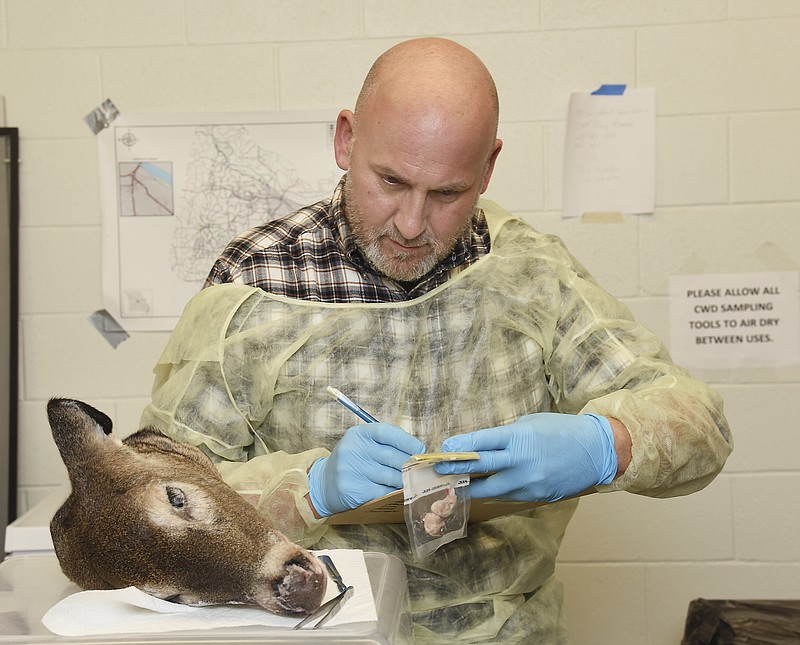A ballot measure aimed at curtailing the spread of Chronic Wasting Disease could appear on the November 2018 statewide ballot.
The Missouri Secretary of State's Office has authorized Hunters for Fair Chase to circulate petitions intended to protect the state's white-tailed deer herd, according to a news release. HFFC will begin gathering signatures soon. If enough signatures are gathered, voters will decide whether to ban transporting live big game in Missouri.
HFFC is a campaign committee formed by sportsmen wanting to reduce the threat of new outbreaks of CWD, which is already known to affect free-ranging deer in at least four areas of Missouri. HFFC wants voters to decide if the shipping of deer and other big game animals between the 45-high fence shooting facilities and 153 breeding facilities currently permitted in Missouri should be eliminated.
Chris Kossmeyer, president of the Missouri chapter of HFFC, said the petition seeks to reinforce the Missouri Conservation Commission's authority to regulate captive and free-ranging deer, elk and other big-game animals, as well as ban transportation of deer for commercial purposes.
"Transportation of captive deer to be bred and shot inside high-fence facilities is a direct threat to Missouri's deer resource," Kossmeyer said in the HFFC news release. "Twenty other states already prohibit or restrict big-game pay-to-shoot operations. Missourians overwhelmingly support common-sense measures the Conservation Department has proposed to contain CWD, but legal challenges from deer breeders and high-fence hunting operators have halted those moderate, reasonable measures. The Conservation Commission needs clear authority to regulate captive deer and elk if we are to have any hope of managing CWD."
After Kossmeyer addressed the commission at its regular meeting Friday in Jefferson City, Department of Conservation spokesman Joe Jerek said: "Citizens have the constitutional right to express themselves through the initiative petition process. That right would certainly include the efforts of those associated with Missouri Hunters for Fair Chase. Our Constitution clearly places the authority to regulate wildlife and game with the Missouri Conservation Commission."
The first reported case of CWD in Missouri came from a private hunting reserve in Linn County in 2010. A hunter killed a CWD-infected buck near Centertown in 2015.
It's unclear how the disease has spread across the state, but more than 40 cases have been confirmed since 2010, both in captive deer and free-range deer.
There are captive deer farms in Cole, Boone, Callaway, Miller, Moniteau and Osage counties.
The Department of Conservation floated rules in 2014 that would have required double fencing around captive deer. But state lawmakers balked at the cost to deer ranchers, so the department withdrew the proposition. The department did ban importing deer from other states.
No evidence suggests CWD is a threat to humans, but the U.S. Centers for Disease Control recommends not eating deer meat that has tested positive for CWD.
CWD is similar to mad cow disease: the highly infectious disease is always fatal to animals in the deer family, there is no vaccine or cure, symptoms can remain dormant for years, the disease can remain in soil and on other surfaces for an indefinite length of time, and there is no way to screen living animals since the test involves sampling brain or lymphatic tissue.
"CWD has the potential to devastate the Show-Me State's wild deer herd, along with the 12,000 jobs and the $1 billion-a-year state industry based on wild white-tailed deer," Steve Jones, secretary for the Missouri chapter of the HFFC, said in the news release. "Attitude surveys show that Missourians - hunters and non-hunters alike - agree that shooting deer inside high-fence enclosures is not hunting and falls outside of the widely supported fair-chase hunting tradition."
For more information about the potential ballot measure, visit FairChaseMissouri.com.

